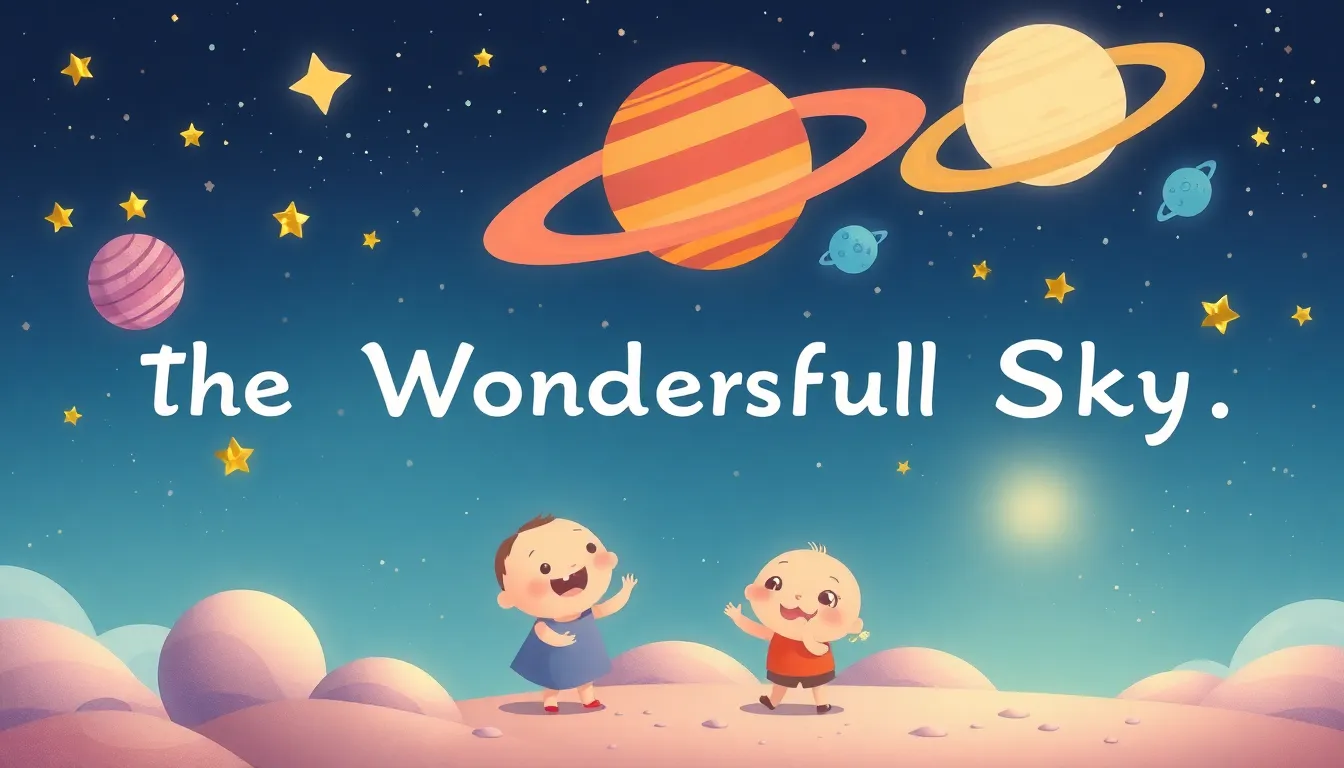
🌈 the Wonderful Sky
Introduction
Look up! The sky is a big, bright blanket over us. It can be blue, pink, gray, or gold. It makes us feel happy, calm, and curious.
1. Colors in the Sky
- Blue Sky, Blue Sky – soft and wide.
- Pink Sky, Pink Sky – at sunrise and sunset.
- Gray Sky, Gray Sky – when clouds gather.
The sky changes its colors like a gentle painting.
2. Counting Clouds
Count the fluffy clouds together:
1️⃣ One cloud drifting slow.
2️⃣ Two clouds floating side by side.
3️⃣ Three clouds playing hide‑and‑seek.
Touch the clouds with your imagination and say, “Clouds, clouds, float and glow!”
3. Sounds of the Sky
- Whoosh – the wind whooshes through the trees.
- Tweet – birds sing sweet songs.
- Boom – distant thunder rumbles (when it’s safe to stay inside).
Feel the sounds, smile, and say, “Sky sounds, sky sounds, happy all day!”
Simple Activity: Sky Collage
- Gather blue, pink, and gray paper.
- Glue three pieces together to make a sky picture.
- Draw or stick 1, 2, or 3 cotton‑ball clouds.
- Say the colors and numbers out loud while you work.
Conclusion
The sky is a big, friendly space above us. Keep looking up, count the clouds, hear the sounds, and let your imagination fly. The sky is waiting for you to explore! 🌟